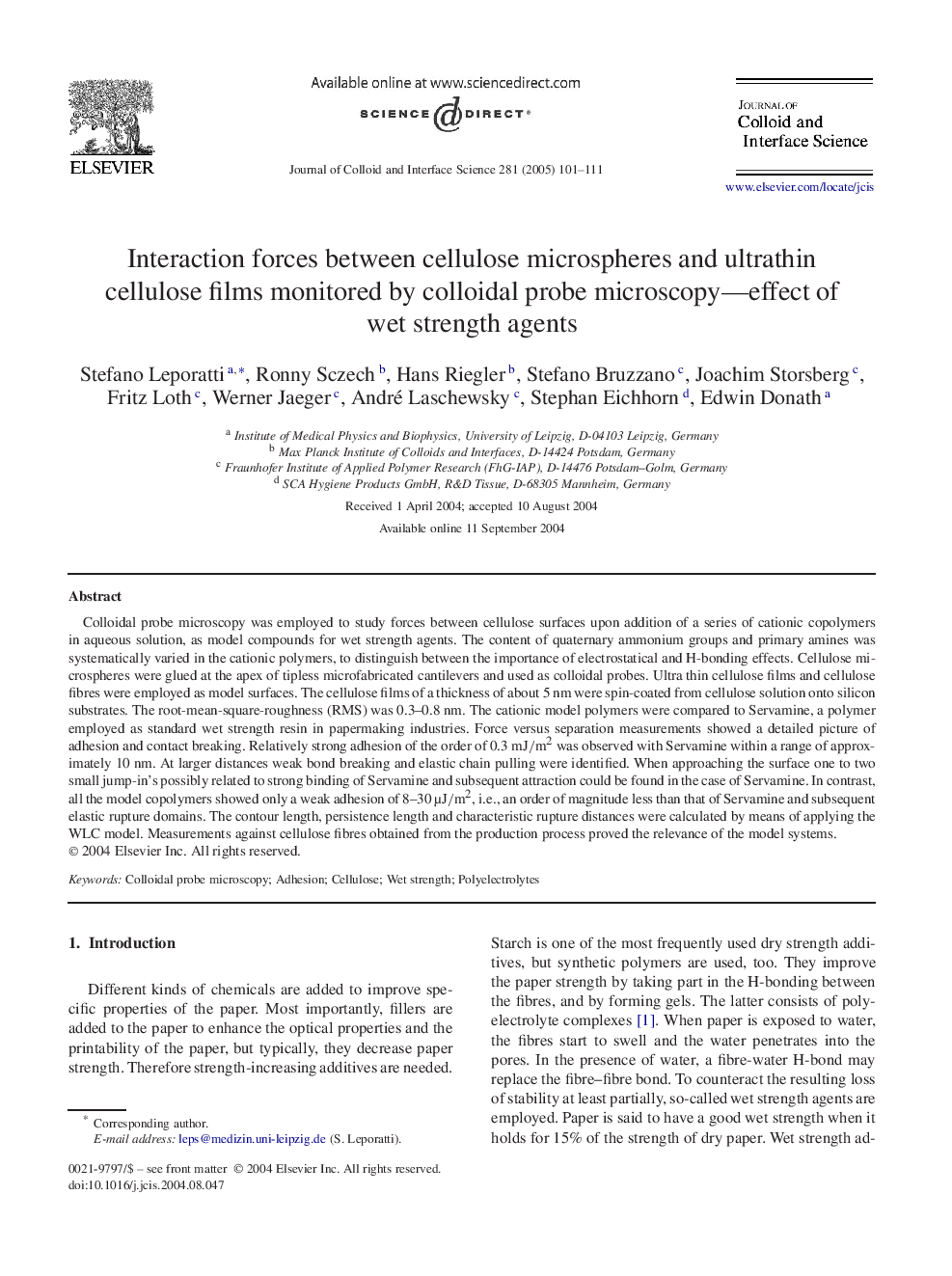| Article ID | Journal | Published Year | Pages | File Type |
|---|---|---|---|---|
| 10378509 | Journal of Colloid and Interface Science | 2005 | 11 Pages |
Abstract
Colloidal probe microscopy was employed to study forces between cellulose surfaces upon addition of a series of cationic copolymers in aqueous solution, as model compounds for wet strength agents. The content of quaternary ammonium groups and primary amines was systematically varied in the cationic polymers, to distinguish between the importance of electrostatical and H-bonding effects. Cellulose microspheres were glued at the apex of tipless microfabricated cantilevers and used as colloidal probes. Ultra thin cellulose films and cellulose fibres were employed as model surfaces. The cellulose films of a thickness of about 5 nm were spin-coated from cellulose solution onto silicon substrates. The root-mean-square-roughness (RMS) was 0.3-0.8 nm. The cationic model polymers were compared to Servamine, a polymer employed as standard wet strength resin in papermaking industries. Force versus separation measurements showed a detailed picture of adhesion and contact breaking. Relatively strong adhesion of the order of 0.3 mJ/m2 was observed with Servamine within a range of approximately 10 nm. At larger distances weak bond breaking and elastic chain pulling were identified. When approaching the surface one to two small jump-in's possibly related to strong binding of Servamine and subsequent attraction could be found in the case of Servamine. In contrast, all the model copolymers showed only a weak adhesion of 8-30 μJ/m2, i.e., an order of magnitude less than that of Servamine and subsequent elastic rupture domains. The contour length, persistence length and characteristic rupture distances were calculated by means of applying the WLC model. Measurements against cellulose fibres obtained from the production process proved the relevance of the model systems.
Related Topics
Physical Sciences and Engineering
Chemical Engineering
Colloid and Surface Chemistry
Authors
Stefano Leporatti, Ronny Sczech, Hans Riegler, Stefano Bruzzano, Joachim Storsberg, Fritz Loth, Werner Jaeger, André Laschewsky, Stephan Eichhorn, Edwin Donath,
